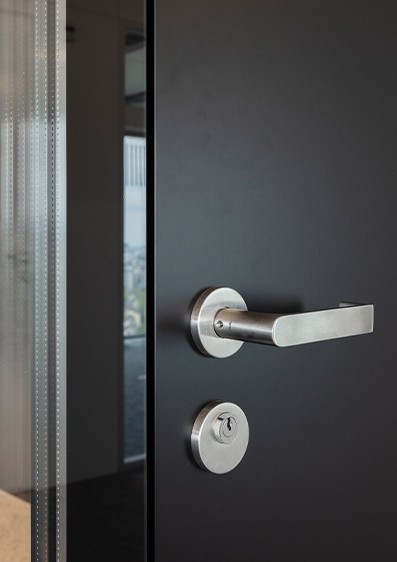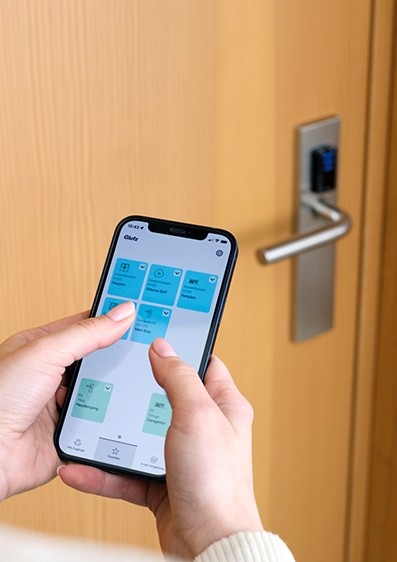We all use them on a daily basis. The technical name for them is lever handles, but we know them as door latches. Many of the door latches used in Switzerland come from Glutz AG, which has been making locks and fittings – including lever handles – in Solothurn since 1863.
‘Our range has expanded significantly in recent years,’ says Jan Preisig, Project Manager for Production Optimisation at Glutz AG. ‘Today we produce almost everything that makes doors work, from fittings and locks to mechanical and electronic access systems.’ Glutz also runs a manufactory where seasoned experts cast and machine unique custom fittings from bronze or brass. For example, to recreate historical door fittings in accordance with today’s standards, to provide break-in protection or combine them with the Glutz electronic access system.
An array of door latches, made in Switzerland with robot-assisted technology
Glutz AG in Solothurn is a leading manufacturer of access solutions, from door latches to electronic access systems. New ABB robots for welding and grinding are helping to further boost quality and efficiency at our long-standing Swiss production site.
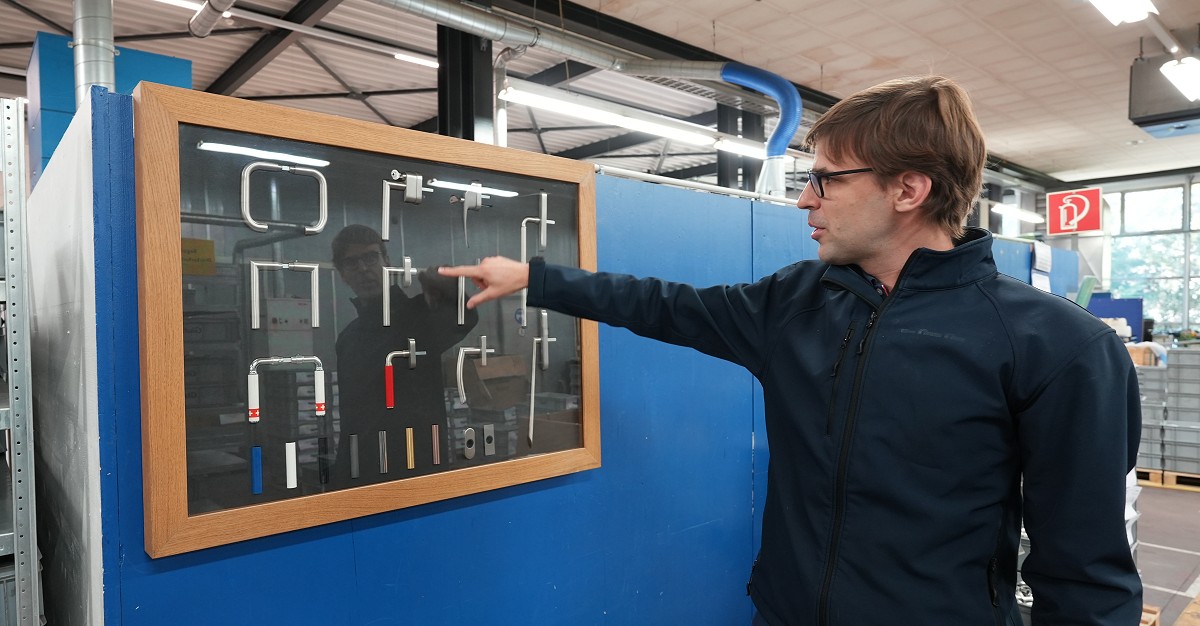
Jan Preisig gives an insight into the range of lever handles.
At Glutz AG, everything is Swiss-made. The sole production site is the company headquarters in Solothurn, while the development department for electronic access systems is located in Wallisellen. Glutz AG employs a total of around 300 people. Its main sales market is Switzerland, where it is the market leader for locks and fittings. It also has export markets with sales offices in Germany, Austria and the United Kingdom.
To remain competitive internationally, Glutz has long used robots for repetitive work steps that can be automated. ‘Until recently we’ve had a few reliable ABB robots in use here that were installed around the turn of the millennium,’ explains Preisig
Even with the most durable robots, there comes a time when you need to make a generational shift to more modern systems. ‘We specified in our manufacturing strategy that it had to be possible for us to programme the new robots ourselves. Apart from that, it was important that lever handles should only require manual machining for very small quantities and complex shapes.’
In the evaluation of new robots, Glutz opted for industrial robots from ABB to handle these production steps. ‘Our positive experience with the previous ABB robots played a part in this decision, but also the fact that it was relatively simple to program them with RobotStudio,’ explains Preisig.
So Glutz recently purchased a new variety of industrial robots from ABB. One – an IRB 1200 – operates as a welding robot, welding spindle tubes onto the lever handles. The lever handles are then connected with the door’s second handle by a square spindle through these tubes. This welding cell was set up by the robotics integrator Robo-Mat.
> Find out more about the ABB robots.
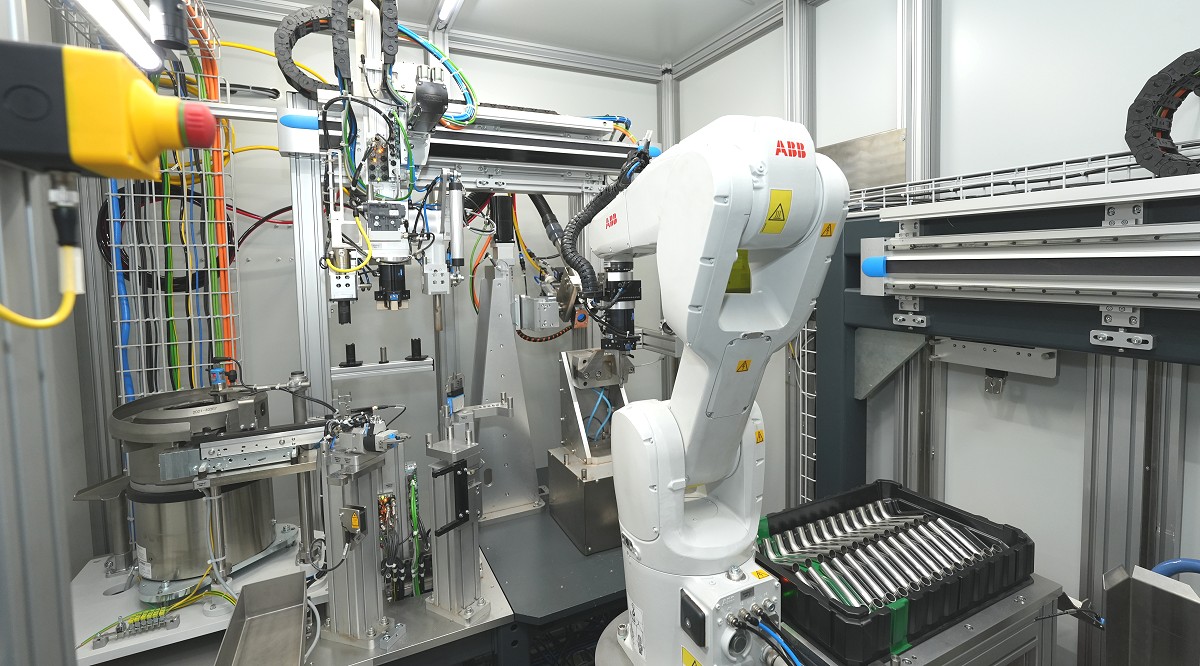
The other ABB robots are used for grinding and brushing lever handles. Two IRB 2600 robots make up one grinding cell designed by the integrator SHL. One IRB 2600 supplies the parts on a workpiece carrier; the second picks them up and grinds them. ‘The special thing about this step is that we can use the same workpiece carrier for lever handles with different diameters. For that purpose, the spindle tubes that the robot grips onto aren’t precisely arranged in rows on the carrier, which would make them difficult for the robots to handle,’ says Preisig. Instead, the ABB experts came up with a solution – the robot ‘wobbles’ the bolt, with which it grips the workpiece, into the spindle tube until it sits soundly on the gripper arm.
‘We can machine a wide range of our lever handles in these grinding cells,’ says Preisig. ‘Around 80 different geometric designs are currently programmed and saved here.’ In the past, the old robots were only able to grind and brush the three or four most common geometries. Manual work was required for the rest, in smaller batches.
Expertise in programming the robots independently for additional, new work steps is something that Jan Preisig and other experts have acquired through training courses – some with ABB, some with the integrators. ‘Looking at these automated work steps, the first thing is the quality has to be right. After that we can boost efficiency, process more parts more quickly – and for smaller batches, too, as we set out in our strategy. With these new ABB robots, we’ll achieve those targets,’ says Preisig.
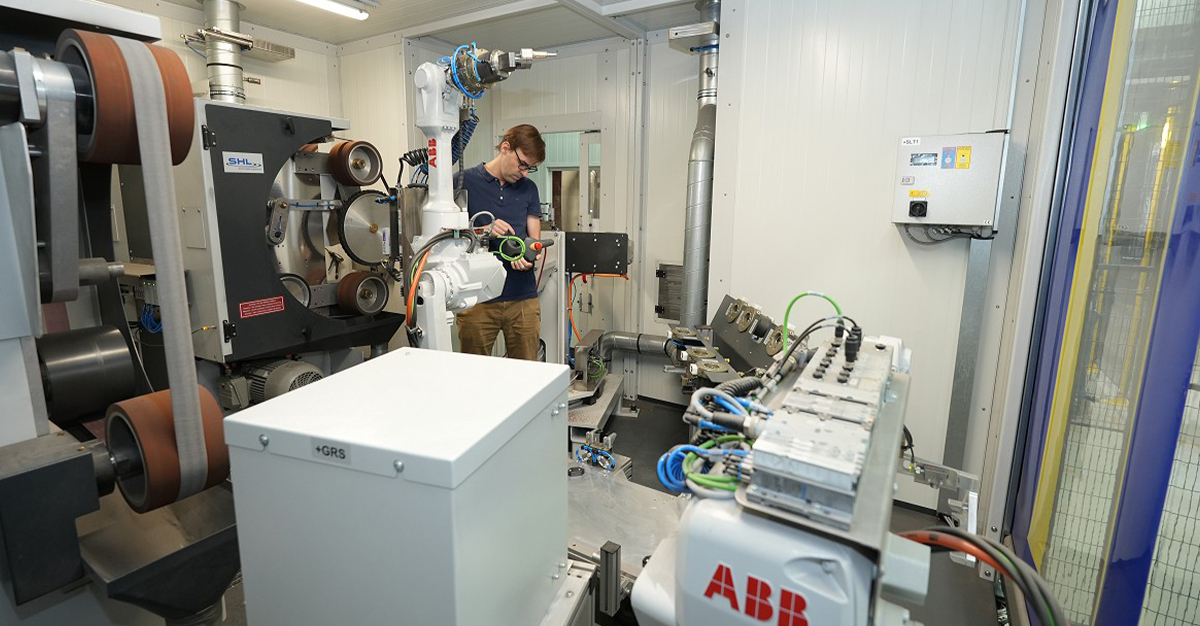
Jan Preisig and his colleagues programme the robots themselves.

